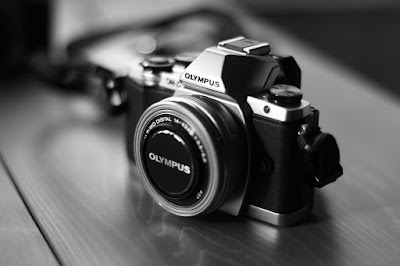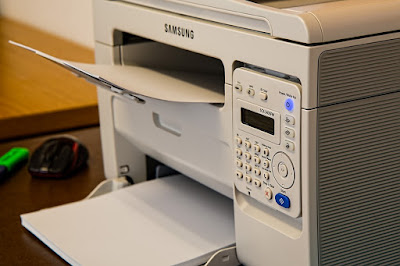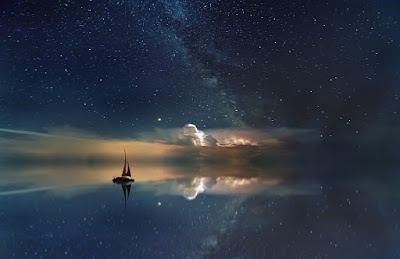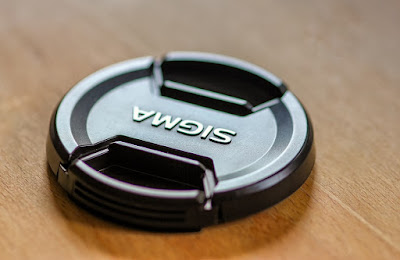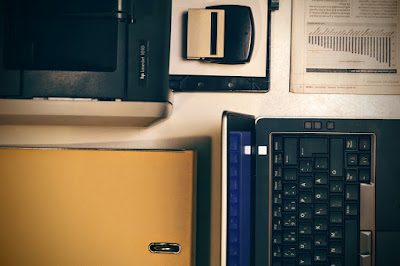Now you are reading article about 7 Facts About How To Take Photos At Night
Whether you're utilizing a cellphone, an electronic point-and-shoot camera, or a pricey SLR, you'll take far better photos when you find out more about light as well as your camera.
Taking photos with a flash often provides unattractive results. Washed-out, toned, phony-looking encounters with monstrous make-up can wreck your recollections of any special event. The rest is so dark it's worthless. Here's how to consider great, natural-looking portraits and photos in low or suprisingly low light. While written for digital camera models, many old film cameras may use these pointers, too.
The entire strategy is control or compensation for low light, and using some simple built-in controls on your camera. Much like any new tool, the main element to getting these to work how you want is practice, practice, practice.
For light, you can deliberately place your camera to flash, or never to flash. Understand how to turn from the flash and use day light to get better results. The typical icons are a lightning bolt (flash always fires) and a lightning bolt with a club through it (never flashes). Take one picture with flash, then another without flash, and you will instantly start to see the huge difference.
Modern flashes make an effort to compensate somewhat for distance, but too close continues to be too close, and too much is still too much.
Because of this article, you can forget the 'eyesight' icon (fires the flash rapidly several times to shrink the subject's pupils, eliminating 'red eyes' then fires one final time to have a photo). Prevent the 'car' placing, which automatically decides whether to fireplace the flash or not, with respect to the available light. You can find other configurations (a moon and superstar icon may be considered a quick, convenient 'evening' setting up -- check it out).
First, obtain your camera manual. For many individuals, it's much simpler to have a searchable smooth copy (click on the 'binoculars' icon) on your hard drive than to find and thumb through a difficult copy published manual. Many cameras don't even feature a published manual nowadays; it's on the Compact disc. To download your gentle duplicate as a searchable Adobe Acrobat PDF document, just Google the name and style of your camera and manual PDF. Which means that your Google key phrase might appear to be this: olympus fe-47 manual download pdf
Some cameras have built-in, detailed Help displays for popular features. Many have screen screens that provide an array of valuable automated configurations. Check yours.
Become acquainted with a few of the settings, which differ predicated on model. Test and test before you will need these configurations which means you can learn what your camera can do as well as how to do it. A lot of the configurations you will discover can be overlooked -- they're for another thing. Established the camera's clock as long as you're in there as well as your photos will all be time- and time-stamped.
Changing the ISO or ASA rate establishing from 'auto' to a higher amount makes the camera a lot more sensitive to light. In the event that you go through the inner information in photos you've used, it probably includes the 'film acceleration' the camera used. 100 and 200 are normal. Lower amounts mean there's a lot light you are able to toss some away to get wealthy, deep colors and eliminate blur. Personally pushing the increase to 1600 means you press just of the meager light for those its worthy of. You'll sacrifice some color range and depth, however your photos will not be a blur of dark shadows. Do not forget to change it out back again to 'car' if you are done or the next photos will be too shiny. Some cameras get back to 'car' when you convert the camera off. Test yours. Film users can purchase a move of high-speed film if you understand you will need it for low-light pictures.
Prop the camera against a stationary subject. A seat, a desk, a wall structure, anything to limit blur from camera motion.
You are able to choose Shutter Speed and Aperture settings on better cameras and everything SLR's. Long shutter openings (1/8 second, one-eighth of another, 125 milliseconds) let in a lot more light, but are easy to blur. Brief times (1/100 second) stop blur but need a lot more light. You might choose the aperture (size of the lens starting) to regulate light, while also managing the 'depth-of-field' or selection of concentrate. Small aperture, (high f-number, f-16 or f-22) long depth of field enables you to get foreground and history objects obviously in concentrate but requires much light. Large-opening apertures (f-2 or f-5.6) narrowly limit the concentrate to your subject matter, blurring the rest, but use much less light. Get creative, understand how they work, and also have more control over your photos.
So, firing 1/8 second at f-1.4 will need maximum benefit of the available light, but will be blurry and out of concentrate if you don't genuinely just work at it. These email address details are much simpler to obtain in the camera than later with software. Again, practice makes perfect.
When you have an 'image stabilization' feature, it could or might not force on the flash. Test yours to see when you can enable it with no flash but still get some good stabilization.
Focus on the prevailing light and the lights in the area. You can significantly enhance the light on your subject's face simply by having them step apart a few ft. If the light is straight over head, deep shadows on the eyes can look ghoulish -- keep these things step back a little for an all natural look.
Find the settings for color balance. If not established properly, photos used under incandescent lights will be too red or orange, fluorescent lights can make everything green or blue. For easy and simple fix, just go through the image screen to complement up colors with the area as you scroll through the colour settings, find a very good one, and press the shutter. Road lights, stage light, neon lighting and other unusual lighting gives vastly greater results if you merely select the best-looking placing available.
Get yourself a tiny 5-inch tripod, around $5 on eBay and other retailers. Create your shot (film swiftness, color balance, zoom, etc.), place the camera on the tripod on the desk, start the 10-second timer (entirely on almost all cameras) and allow camera press the shutter release so that you can eliminate all camera jiggle. Show your subjects the way the camera will alert them right before it takes an image. Some people just like a monopod, a collapsible, full-size tripod that's lacking two hip and legs for easy, low-light, handheld photos.
In case your camera has a contact lens, here is a trick you may use. Push the flash on, but cool off from your subject matter. Zoom directly into make their encounters fill the framework. You may get significantly less flash, but fundamentally the same image. Using more day light will make epidermis shades truer and softer and make the environment better exposed rather than black. Check it out.
The flash works from the very least 5 feet to maximum 10 feet away, and that means you get completely different results by moving back simply a few feet. This does mean utilizing a flash for topics over 12 foot away just makes the camera arranged itself wrong. If you are taking photos while sitting behind the 4th row of the auditorium, change the flash off to progress results, because the flash does not have any effect in any case (except to significantly overexpose the trunk of the top on the individual near you) and makes the camera think there's a lot more light about them than there happens to be.
Contain the camera at the height of your subject's face. ' Barrel distortion ' occurs if you are standing as well as your subject matter is seated. It actually makes them fats. Many people hate to have their picture used because they always look unwanted fat (because they're always seated). Kneel right down to capture those photos. Your photos will most likely be more interesting if you zoom in or move nearer to fill up the body with encounters, unless the backdrop is important. People prefer to see encounters, not toes.
When you have an SLR, you might have an exterior flash with a swivel mind. Point the flash up at a 45-level angle so that it factors to the roof halfway between you as well as your subject. That is called 'jump flash' and provides a softer, more satisfying overall effect. You can even test out diffusers, tissues, a handkerchief and other items within the flash to subdue its power you need to include more day light. A sensor inside the lens may make up for the low light, or the sensor may be on the flash -- don't cover that up. See your manual.
Some final tips. Make your photos more valuable by including -- or excluding -- history and environment by using zoom, changing your situation, or moving your subject matter. Have a few pictures; one will usually look much better than the others. Alert people when to smile so they'll look better. Don't make people wait around (permanently) when you have a snapshot or they don't smile or enable you to take their image.
Digital camera models have a short lag between your time you press the shutter and as soon as they actually take the snapshot. Camera reviews often rate this lag time, and shorter is way better. To pay, some cameras have a 'sports activities' placing that shoots 5 (or even more) structures in fast succession which means you can start just a little early but still get a good shot from the series.
You probably curently have some photo editing and enhancing software on your pc, and it could include 'auto-fix' or manual brightness and contrast modifications, cropping, and other useful things you may use to boost your photos.
Don't trouble buying Photoshop unless you're really dedicated. It's an enormous, expensive, complicated bundle intended for specialists and incredibly serious amateurs that requires a few months to learn. There are many free and under-$20 software programs that are far better for informal and serious photographers. Google picture editing software review download free or similar conditions to discover a good one for your requirements and capability. Online photo journal sites and hard duplicate magazines from the library are excellent for reviews.
Talk about your photos online so others can enjoy them. In the event that you email them copies of the photos, they'll fill their Inbox and become difficult to see, find, organize or revise. Instead, if you email them a web link to the photos, they'll see any new ones you add later, you can organize them into albums, make remarks, improvements, etc. Consider ShutterFly.com, Flickr.com, or PhotoBucket.com. Friends and family can still download them and printing on their computer printer, or order mugs, T-shirts, prints, posters, etc. They are writing services, not back-up services.
Type your photos on your pc. Some individuals use folder brands like C:Photos, then 2010 January, or 2010 Party at Bobs, or 2010 Easter with grandkids, or Business and Personal, or any structure that can help you see them later (placing the entire year first will alphabetize them by yr). Many systems enable you to add Tags that searching for later, irrespective of where the picture is. You might wish to established the folder properties showing you small picture Thumbnails rather than filenames (Home windows Explorer's View menu). You might make copies of the most crucial ones and rename (press F2 or right-click) the filenames, then click-and-drag those into one folder.
Last, however, not least is burning your photos. In case your hard drive accidents (each of them do ultimately) or your personal computer is taken, lost, damaged, fallen, etc., you'll instantly lose all your valuable photos. Consider an internet back-up solution (Google mozy free personal to get 2 gigabytes of free, computerized storage space; enough for a large number of your individual photos). You might copy these to an exterior hard drive or another Computer, but a fireplace, overflow, theft, lightning or other devastation could mean shedding all copies. Fumes from painting an area or other chemistry has been recognized to trash hard disks.
Tips for Firing Great Digital Photos
Wish to know THE biggest key to taking good digital photos? Well here it is: It is the photographer that will take great photos, not the camera. Consider that for one minute. It's true isn't it?
I've seen some individuals take great photos with a straightforward point-and-shoot camera, although some take lousy photos with expensive SLR.
But fret not. Read these ten tips about capturing digital photos and apply them next time you have an opportunity. Before long, you will be shooting such as a pro!
1. Using the Display for Outdoor Portraits
Here's one of my very best secrets on taking great photos - using the fill up adobe flash or display on mode. Hardly any people know that you can (and really should) manage the adobe flash when capturing outdoor pictures. Figure out how to control the display so it continues on when you wish it to, not when the camera deems it appropriate, I promise you could start attaining better outdoor pictures.
An excellent technique is to place your model in the shade under a tree, then use the flash to illuminate the topic. By keeping the topic cool and comfortable, you'll receive a more calm looking portrait.
2. Watch that White Balance
The default white balance setting, which is defined to auto for some digital camera models, can cause problems in your shots. There is that departing the white balance environment on car may leave your digital photos a little on the 'cool' aspect.
The next time you're shooting outdoor portraits and sun-drenched scenery, try changing your white balance setting from auto to cloudy. This modification is the same as putting a slight warming filter on your camera. Achieving this escalates the red and yellowish tones, leading to richer, warmer pictures.
3. Test out the Macro Setting
A neat portrait digital photography technique is the macro setting. Figure out how to activate the up close setting on your camera, usually symbolized by a bloom symbol. You will be surprised at the various perspectives you can get on simple, everyday items when they're framed in macro mode.
Get as near to an object as your camera allows. Once you have found something to your preference, contain the shutter button down halfway to permit the camera to target. Only depress the shutter completely down when the confirmation light provides you the just do it.
4. Contain the Camera Level
Keeping the Camera level with all the LCD displays can be an important part of taking great digital photos. The next time you're going for an outdoor shot, try looking for the horizontal lines in character and utilize them as manuals. An example is by using a remove of land, or simply the horizon. Practice level framing of your pictures and as time passes, the process can be more natural for you.
5. Polarized Pictures
Attaching a polarizing filtering to your camera is strongly suggested for landscapes and total outdoor shooting. This sort of filtration system reduces glare and unwanted reflections - leading to richer, more saturated colors, in your photos.
In case your camera can't accommodate a polarizing filtering, you'll be able to try out this little trick which I am using for a long time on my point-and-shoot camera. When you have a set of quality glasses, then you need to them off and utilize them as your polarizing filtration system! Place the eyeglasses as near to the camera lens as
possible and make sure the rims aren't blocking the shot. Check it out, it works.
6. The Tripod can be an Essential Tool
Please keep in mind this suggestion. Tripods are an important tool to every professional photographer and really should be utilized when necessary. They aren't limited to 'professional' photographers (a common misconception). What makes tripods a great accessories? Because they lend balance for an in any other case jittery shot.
The problem is that some tripods are pretty bulkly to transport around. Well, you might try the UltraPod II by REI. This small, flexible, ingenious device ties in your back again pocket and allows you to stable your camera in a number of situations. I believe it applies to about $15.
7. Learn to Utilize the Self-Timer
Are you taking so many photos you are missing from your loved ones picture albums? Well, here's the answer - the self-timer. Sure, you could hands your camera to strangers when you leap in the shot. But you need to get worried about them falling it or working off with it!
With all the self-timer, first find a good steady surface to put the camera and compose the shot. Make certain the concentrating sensor is targeted at a person in the group rather than the distant history. That way, the pictures will come out nice and sharpened.
Another way to use the self-timer is to make long exposures of cars driving a vehicle more than a highway at night. Simply secure your camera on the tripod, then trip the shutter using the self timer.
